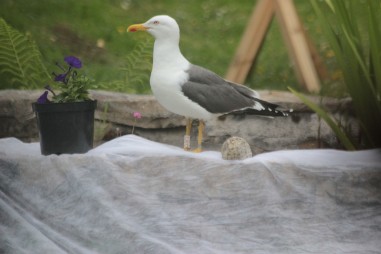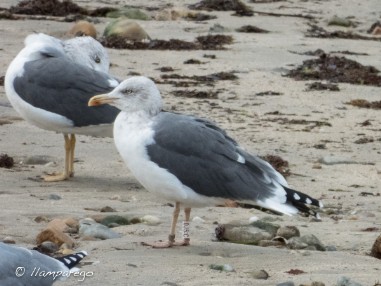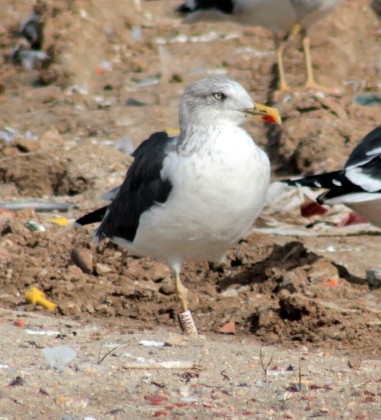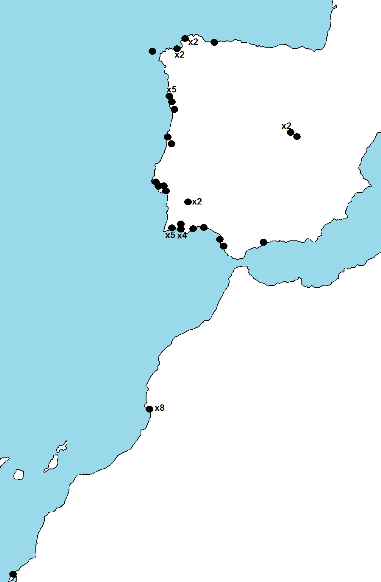Gulls with Rings on Arran
Reports


In June 2020 there were two reports of gulls with rings on their legs on Arran. Both were Lesser Black-backed Gulls a familiar bird round the coast in the summer months. This species is in decline. Both birds had coloured Darvic rings enabling the bird to be identified at a distance.
Bird 0J5:C was photographed in a garden in Lamlash on 11 June. This bird had been ringed in Kildonan on 2 July 2017. In winter it had been photographed in El Franco, Austarias, in Spain on 29 November 2018. ( see photos above)
Bird 4MB:C was seen in Porta Buidhe, Kildonan on 9 June. Its history was more extensive than the bird above. It also had been ringed in Kildonan, in the ringer’s garden, on 24 June 2014. In winter on 21 November 2014 it was on Pinto landfill site, Madrid, Spain, where it was photographed. On 12 February 2015 it was at the same location in Spain. The next report was Porta Buidhe, Kildonan on 14 July 2018 and almost exactly a year later, on 16 July 2019, it was at the same location. In the winter on 6 January 2020 it was back on Pinto landfill site, Madrid, Spain, before returning to Porta Buidhe, Kildonan on 9 June. It is always a sense of wonder to me how birds manage to migrate regularly so precisely from one location to another ( see photo below)
The ringers on Arran, part of the Clyde ringing group, started putting coloured Darvic rings on gulls in 2014. To date on Arran they have ringed 204 Lesser Black-backed Gulls, 218 Herring Gulls, 63 Common Gulls and 21 Great Black-backed Gulls.
The collective information received on the ringed Lesser Black-backed Gulls gives an insight into bird migration. The Lesser Black-backed Gulls birds breeding in the west of Scotland are heading south via Ireland to winter mainly in coastal Portugal and Spain with some moving further south to Morocco, Senegal and Gambia.( See map below) Young non-breeding birds have also been reported in the summer from France and Holland. These younger birds do not make the complete migration back to their breeding areas until about four years old. Information from ringed birds helps not only to give an insight into this migration but also helps to increase understanding of population changes and the possible causes of population decline.
You can help. Bird ringing in Britain and Ireland is organised and co-ordinated by the British Trust for Ornithology. A network of over 2,400 trained and licensed volunteers currently ring over 800,000 birds every year. If you come across any birds with rings, please pass on the information through EURING https://euring.org/. Groups of gulls are worth an extra look to see if you can spot and read a colour ringed bird. All sightings of colour ringed gulls are welcome even of birds that seem to be resident in an area. Please share information on any ringed birds seen with local ringer Terry Southall, email address terrysouthall789@btinternet.com

